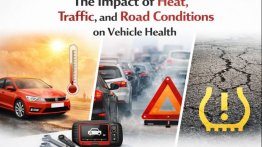When a tire blowout occurs, it often leads to questions about liability, specifically whether a tire manufacturer can be held responsible for the consequences of such an event. Tire blowouts can be caused by a variety of factors, including defective manufacturing, improper tire design, or inadequate quality control processes. In instances where a tire blowout has led to an accident or injury, consumers may consider taking legal action against the manufacturer.
Legal suits against tire manufacturers are typically grounded in product liability law. This area of law deals with holding manufacturers, distributors, wholesalers, or retailers accountable for putting a defective product into the hands of a consumer. To pursue a lawsuit successfully, the plaintiff must establish that the tire was defective and that this defect was the direct cause of their damages.
In determining the viability of a lawsuit, several factors are carefully considered. These include the tire's maintenance history, the presence of any recalls for that specific tire model, and the adherence to industry safety standards by the manufacturer. Gathering evidence such as expert testimony, accident reports, and the tire itself often forms the bedrock of building a strong case against a tire manufacturer.
Understanding Tire Blowout Incidents
Tire blowouts are unpredictable events that can lead to significant vehicle damage and serious accidents. Identifying their causes and the parties responsible is critical for legal recourse
Causes of Tire Blowouts
Tire Defects: Manufacturing defects are a primary cause of tire blowouts. Defects might include issues with the tire's design, manufacturing process, or the materials used. Faulty Installation: Improperly installed tires can lead to loss of air pressure and eventual blowouts. Wear and Tear: Over time, tires may suffer wear that goes unnoticed, such as tread separation or sidewall degradation. Overloading: Exceeding a vehicle's load capacity can overwhelm the tires, leading to overheating and blowouts. Temperature Changes: Sudden or extreme temperature fluctuations can adversely affect tire pressure and integrity.
Determining Liability and Negligence
Manufacturer's Responsibility: If a blowout is due to manufacturing defects, the tire maker may be held liable. Lawyers for car accident cases will scrutinize the tire's design and manufacturing processes. Installation Errors: Should an investigation indicate poor installation, the service provider could be at fault. Maintenance Records: Examination of maintenance logs helps establish the vehicle owner's regularity and thoroughness in tire upkeep, pertinent in arguing negligence. Accident Reconstruction Experts: These professionals can be instrumental in proving liability by analyzing the blowout’s mechanics and aftermath.
When seeking compensation, showing clear evidence of negligence is essential for a strong legal claim.
Legal Recourse After a Tire Blowout
After a tire blowout, victims may have the legal option to seek compensation if the incident was caused by a defective tire. The process typically involves proving that the tire was flawed due to design, manufacturing, or marketing defects.
Building a Product Liability Case
To hold a tire manufacturer accountable for a blowout, one must establish a product liability claim. This requires demonstrating that:
- The Tire Was Defective: Evidence must show that the tire was inherently flawed, due to either its design, the manufacturing process, or insufficient warnings about its use.
- The Defect Caused the Blowout: There must be a direct link between the tire's defect and the blowout.
- The Blowout Led to Damages: It is crucial to prove that the blowout caused injuries or property damage.
This often involves expert testimony and a detailed analysis of the tire's condition and the circumstances of the incident.
The Role of Accident Attorneys
Lawyers specializing in car accident cases are instrumental in navigating the complexities of a product liability claim. They typically:
- Offer a free initial consultation to assess the merits of the case.
- Investigate the incident, often enlisting forensic experts to analyze the tire’s failure.
- Handle all aspects of the legal process, from filing claims to negotiating settlements or representing the client in court.
Such attorneys operate on a contingency fee basis, meaning they are paid from the awarded compensation.
Compensation and Damages
Victims of tire blowouts can seek compensation for the following damages:
- Medical Expenses: Costs for immediate and ongoing medical treatment resulting from the accident.
- Lost Income: Wages lost due to time off work or loss of earning capacity.
- Pain and Suffering: Non-economic damages for physical and emotional distress.
- Property Damage: Cost for repairs or replacement of the vehicle and other damaged property.
Calculating these damages accurately is vital to ensure adequate compensation covering all the victim's losses.











